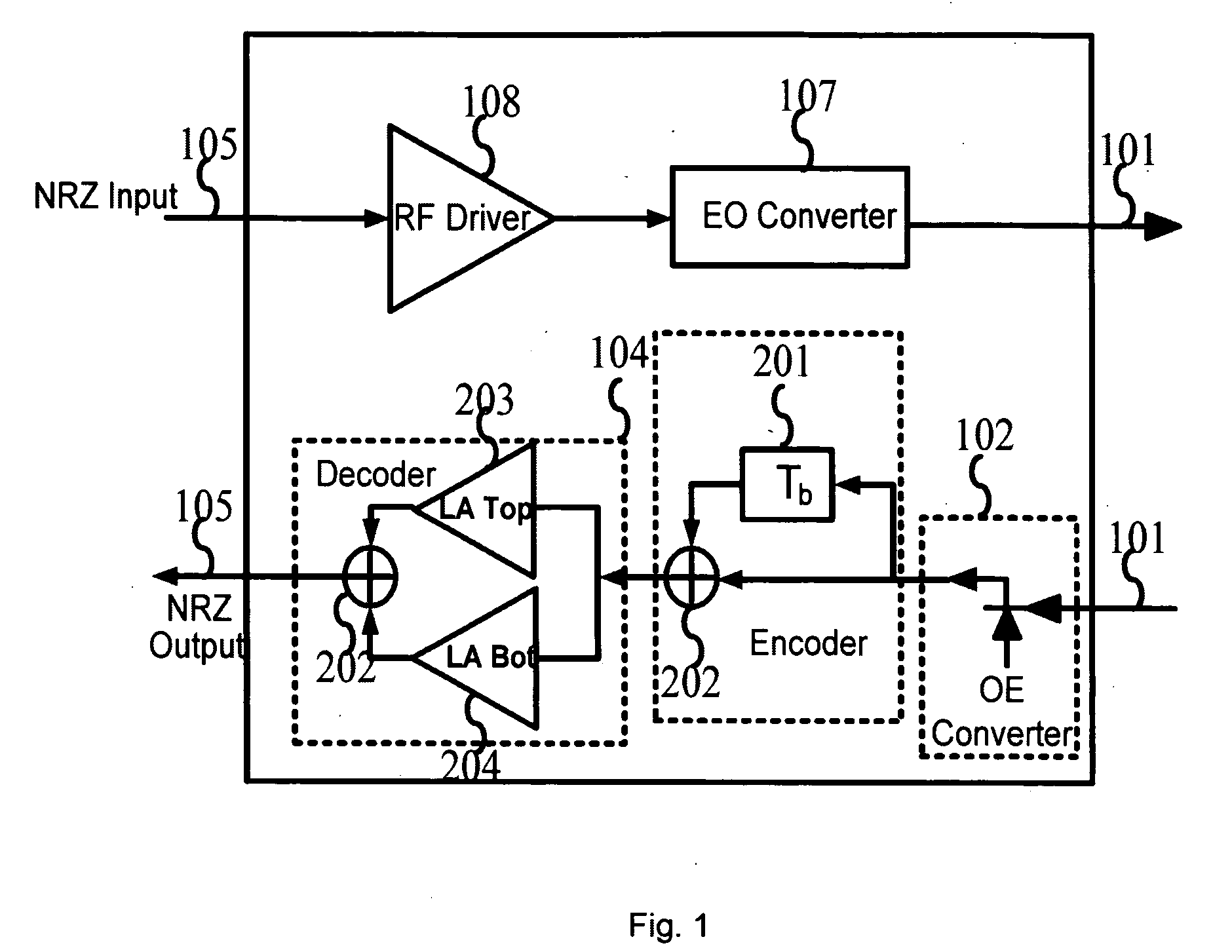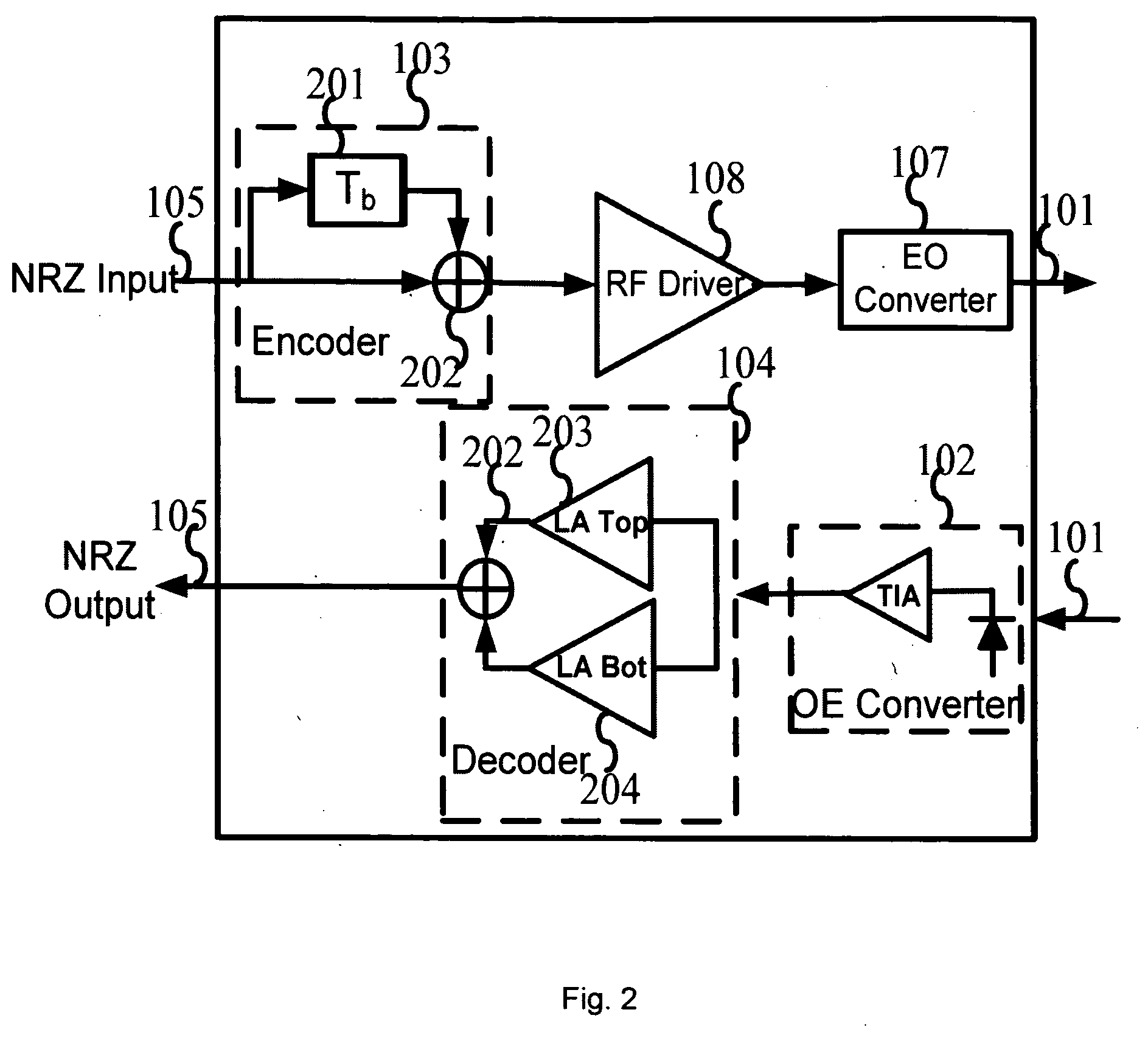Multiple Electrical Level Dispersion Tolerant Optical Apparatus
a technology of optical apparatus and electrical level, applied in the direction of electrical apparatus, electromagnetic transmission, electromagnetic transmission, etc., can solve the problems of inconvenient use, high cost, and bulky, and achieve the effect of simple and less costly, low cost of implementing nrz or rz modulation schemes, and easy availability of components
- Summary
- Abstract
- Description
- Claims
- Application Information
AI Technical Summary
Benefits of technology
Problems solved by technology
Method used
Image
Examples
Embodiment Construction
[0022]A transceiver according to an embodiment of the invention is shown in FIG. 1, where the present invention is implemented on the receiver side of the transmission system. The transceiver comprises a RF driver 108 and an electrical to optical convertor 107 on the transmitter chain. This transmitter chain is the typical implementation for NRZ system. The 107 block can be of other types of lasers and modulators to have the RZ, NRZ, Optical Single Side Band (OSSB) or Phase Shifted Binary Transmission (PSBT) modulation on the transmitter side. For example, the lasers can be the vertical cavity surface emitting lasers (VCSEL), or the FP lasers, or DFB lasers, or the external modulators can be of the MZ types, integrated, or hybrid integrated, or isolated from a CW laser. On the receiver chain, the received modulated light is firstly detected by a PIN or APD based photo detector 102 to perform the optical to electrical conversion. After that, the generated electrical signal is then fe...
PUM
 Login to View More
Login to View More Abstract
Description
Claims
Application Information
 Login to View More
Login to View More - R&D
- Intellectual Property
- Life Sciences
- Materials
- Tech Scout
- Unparalleled Data Quality
- Higher Quality Content
- 60% Fewer Hallucinations
Browse by: Latest US Patents, China's latest patents, Technical Efficacy Thesaurus, Application Domain, Technology Topic, Popular Technical Reports.
© 2025 PatSnap. All rights reserved.Legal|Privacy policy|Modern Slavery Act Transparency Statement|Sitemap|About US| Contact US: help@patsnap.com



